Must-Try Food in Kyushu: 20 Local Dishes to Remember

Discover delectable eats, treats, and drinks on our culinary tour around the island of Kyushu! We introduce 20 exceptional local dishes from each area in Kyushu: Fukuoka, Oita, Miyazaki, Nagasaki, Kumamoto, Kagoshima, and Saga.
If you’re a fan of Japanese food, consider taking a culinary tour around the region of Kyushu on your next trip to Japan.
Kyushu is the third-largest island in the Japanese archipelago. For centuries, Kyushu and its many historic ports were the best way to get in and out of Japan. As a result, the local cuisine has a unique mix of Western and Eastern influences that make the food in this region extra special and delicious.
In this guide, we’ll explore Kyushu’s most famous dishes by prefecture, and include the best places to try some of Kyushu’s must-try dishes.
Kyushu Food: Must-Try Dishes
Fukuoka
1. Hakata Ramen
2. Amaou Strawberries
3. Motsunabe
Kagoshima
4. Green Tea
5. Fish Delicacies
6. Shirokuma Shaved Ice
Kumamoto
7. Ikinari Dango
8. Akaushi Beef
9. Horse Meat Dishes
Miyazaki
10. Chicken Nanban
11. Jidori Charcoal Chicken
12. Hyuganatsu Fruit
Nagasaki
13. Castella
14. Kakuni Manju
15. Champon
Oita
16. Toriten
17. Jigokumushi
18. Soy Sauce and Miso Specialties
Saga
19. Seafood in Saga
20. Hot Spring Tofu
Read also
1. Hakata Ramen
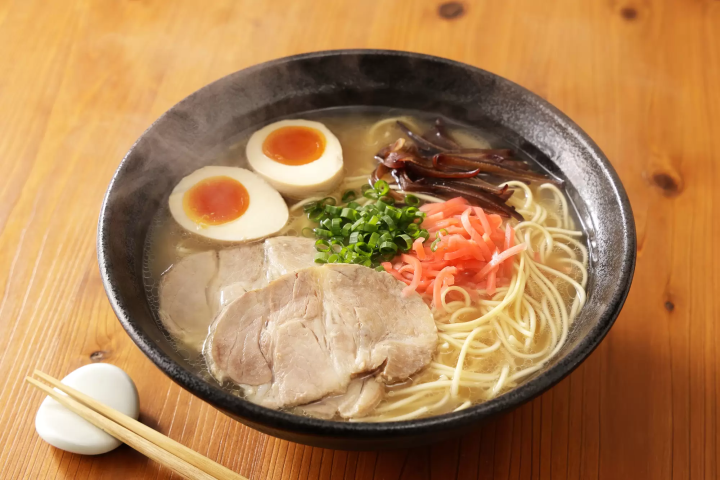
Photo by Pixta
Hakata Ramen is a specialty dish from Fukuoka prefecture and one of the most famous Kyushu foods. Hakata-style ramen, which originated in the central part of Fukuoka City known as the Hakata Ward, is a hearty ramen served with a variety of toppings that can be enjoyed year-round.
Hakata Ramen is made with pork bones that have been cooked until the broth is clouded and white. The noodles are also thinner than usual, making it easy for the noodles to absorb the smooth flavor of the broth.
In short, Hakata-style ramen is a must-try for all foodies when visiting Fukuoka prefecture.
Where To Try Hakata Ramen:
Nagahama Number One Gion Store
Nagahama, Chuo Ward, Fukuoka Map
2. Amaou Strawberries

Photo by Pixta
Known as the “King” of strawberries, Amaou Strawberries are a local delicacy that are only in season between late winter and early spring (January to March).
Amaou strawberries are grown in Western Fukuoka in Itoshima City. Strawberries that are exclusively sold in the Hakata Ward are marketed as “Hakata Amaou,” and are also very delicious. These succulent strawberries are easily recognized by their bright red flesh, plump shape, and rich taste.
The best way to try Amaou Strawberries is by going strawberry picking at any local farm in Itoshima when the strawberries are in season.
Where To Try Amaou Strawberries:
Sakura Farm
Shimasakurai, Itoshima, Fukuoka Map
Read also
3. Motsunabe: Offal Hot Pot
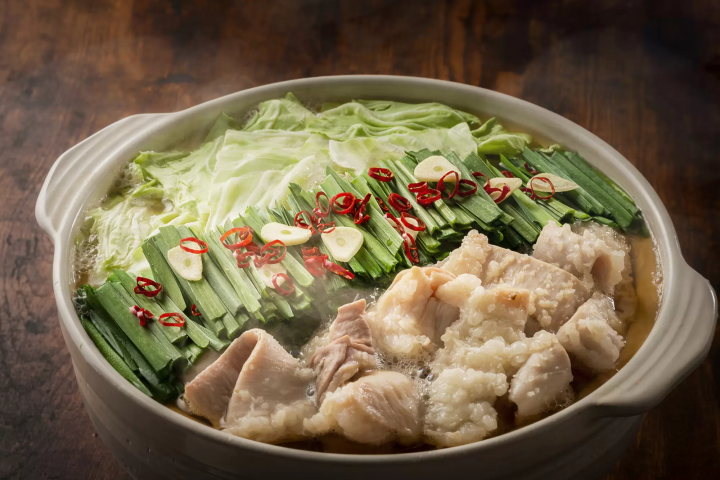
Photo by Pixta
Motsunabe is a heart-warming hot pot dish that was popular in Tokyo during the 1990s but originated in Fukuoka in the 1940s. Today, Motsunabe is still a popular dining choice for locals and is considered a healthy meal.
The dish consists of beef intestines, cabbage, veggies, and tofu. The ingredients are cooked together in a soy sauce, miso, or spicy broth. It’s served boiling hot on a portable stove right at the table, with proportions that are best shared amongst a small group of people.
Pro tip: This satiating dish is an excellent choice if you plan on visiting Japan in winter!
Where To Try Motsunabe:
Motsunabe Yamanaka Honten
Mukaino, Minami Ward, Fukuoka Map
4. Green Tea
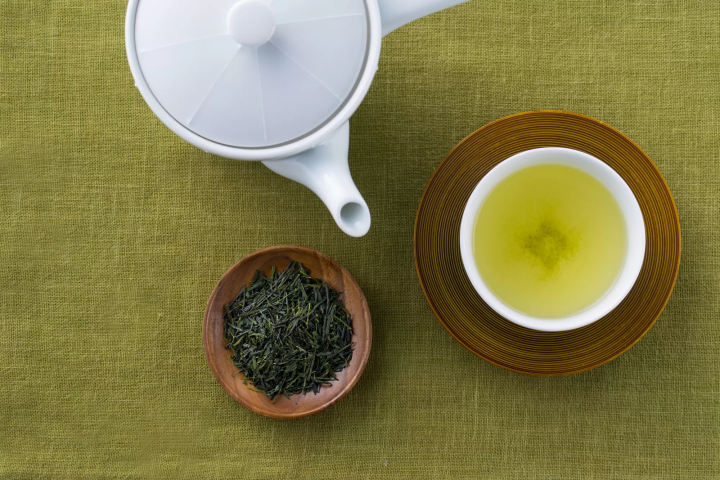
Photo by Pixta
Did you know that Kagoshima is famous for its high-quality green tea?
Green tea uses the highest quality of tea leaves that are milled into a fine, bright green powder called “matcha powder.” Green tea is traditionally used for tea ceremonies, but in recent times has seen a resurgence amongst coffee and tea lovers.
The volcanic soil and warm climate support mass tea production in Kagoshima. Kagoshima accounts for 30% of all tea produced in Japan, second only to Shizuoka prefecture.
Consider taking a tour of a private tea factory and learn how to make your very own matcha.
Where To Try Green Tea:
Ikeda Seicha
3-11 Sennichicho, Kagoshima Map
*The Factory Tour and Tea-Making Experience are available in English and Japanese
5. Fish Delicacies
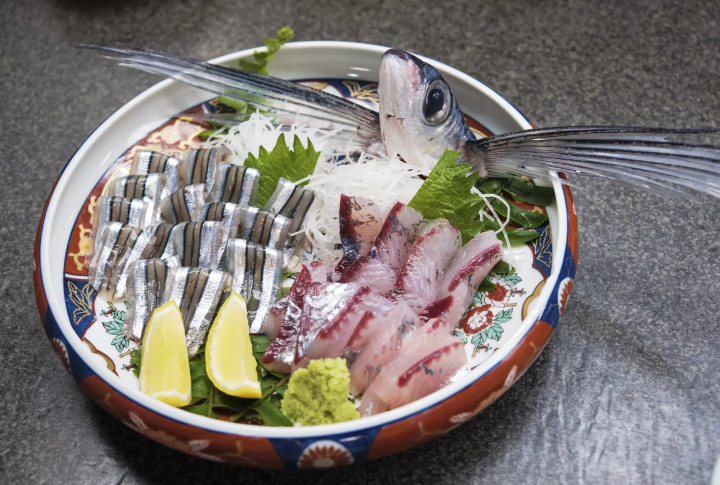
Photo by Pixta
Kagoshima has such an abundance of sea life that some of its most famous dishes are types of fish. Here are just a few examples of the many fish delicacies to try on your next trip.
Kanpachi: Harvested from the waters of the Kinko Bay, Kanpachi is the preferred premium fish for sashimi and sushi. However, it can be enjoyed in a variety of ways and Kagoshima is one of the few places you can try Kanpachi as “shabu-shabu,” a popular Japanese hot pot dish.
Tobiuo: Also known as “flying fish,” Tobiuo is a delicacy that comes from Yakushima Island. It is best served up as fried, salt-cured, or sashimi (raw) and is a staple of Yakushima home cooking.
Unagi: Kagoshima is the highest production of farmed eel or “unagi.” It is a delicacy you can find at high-end restaurants throughout Japan, but the unagi found in Kagoshima is very delicious.
Where To Try Unagi in Kagoshima:
Unagi no Sueyoshi
14-10 Higashisengokucho, Kagoshima Map
6. Shirokuma Shaved Ice
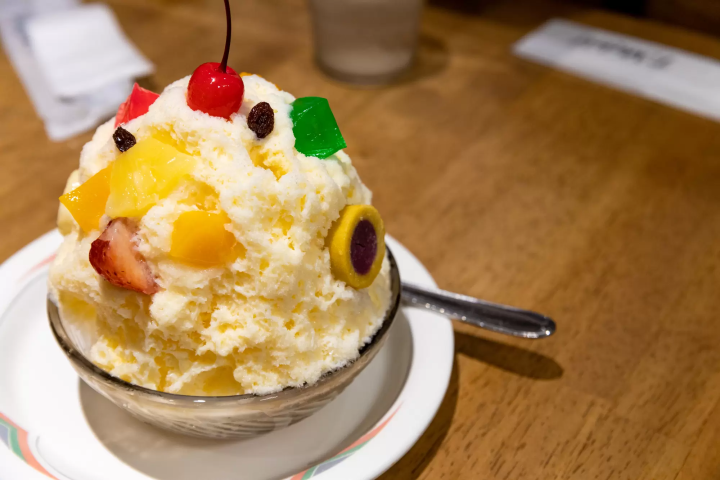
Photo by Pixta
A type of Kyushu food that is a must-try on our culinary tour is a sweet dessert known as Shirokuma Shaved Ice. “Shirokuma” means “polar bear”in Japanese.
This popular shaved ice treat became popular because of the creativity of Tenmonkan Mujaki, a local restaurant in Kagoshima that invented Shirokuma shaved ice in the 1940s. The dessert is a twist on the traditional Japanese dessert known as kakigori, which has been a summer favorite in Japan for centuries.
Shirokuma is served in a large quantity and decorated with colorful fruit. It's perfect for a hot summer day.
Where To Try Shirokuma Shaved Ice:
Tenmonkan Mujaki
5-8 Sennichicho, Kagoshima Map
7. Ikinari Dango
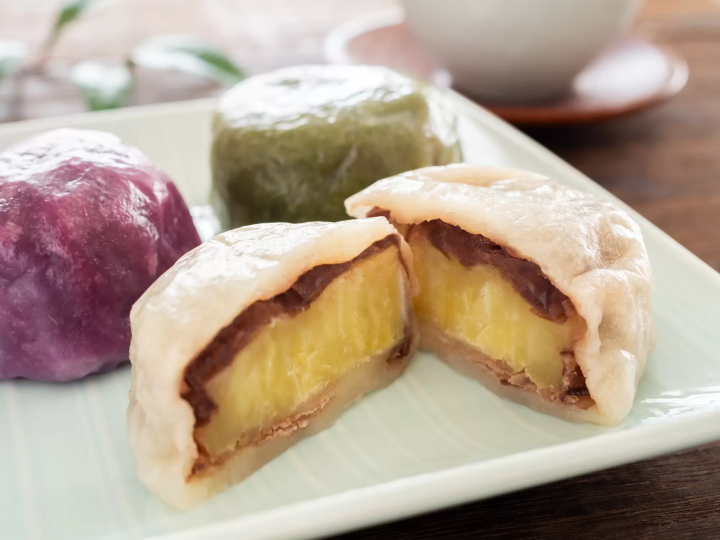
Photo by Pixta
Mount Aso is the most active volcano in Kyushu. Its surrounding peaks, which are all part of the Aso-Kuju National Park, overlook the region where the Ikinari Dango comes from.
The Ikinari Dango is a popular sweet that is made with red bean paste and steamed sweet potato that have been filled into a casing of kneaded wheat flour. Each shop uses their own preferred kind of red bean paste so the level of sweetness varies from shop to shop.
Legend has it that this sweet became popular overnight, which is why it is called “ikinari”in Kumamoto dialect.
Where To Try Ikinari Dango:
Higo Battendo
334 Uekimachi Mitori, Kita Ward, Kumamoto Map
Read also
8. Akaushi Beef
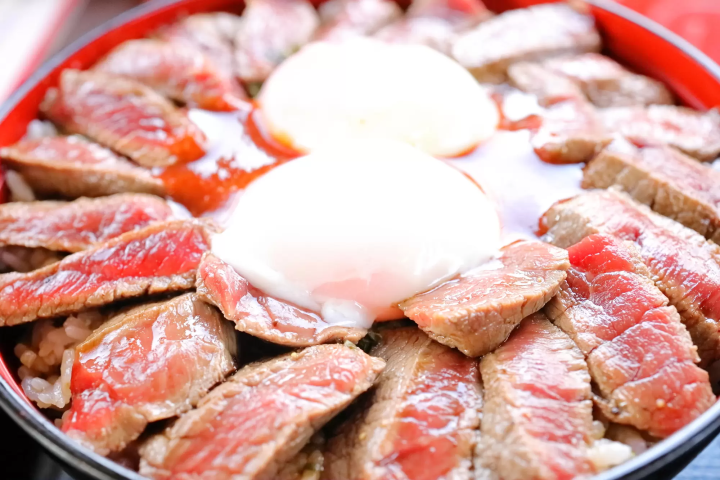
Photo by Pixta
When it comes to Kyushu foods, one of the things Kumamoto is most famous for is its selection of premium Akaushi beef. “Akaushi” is the name of a breed of Japanese cattle nicknamed the “Emperor’s breed.” Akaushi cattle are considered to be one of the best resources for producing high-quality wagyu beef and Kumamoto accounts for 70% of all Akaushi production.
Akaushi beef is famous for its marbling and tender melty taste. The beef can be enjoyed as shabu-shabu, over rice topped with green onion and a soft-boiled egg, and as a premium steak. Consider trying this delicious Kumamoto dish!
Where To Try Akaushi Beef:
Meshi no Yamaichi
235 Uchinomaki, Aso, Kumamoto Map
Read also
9. Horse Meat Dishes
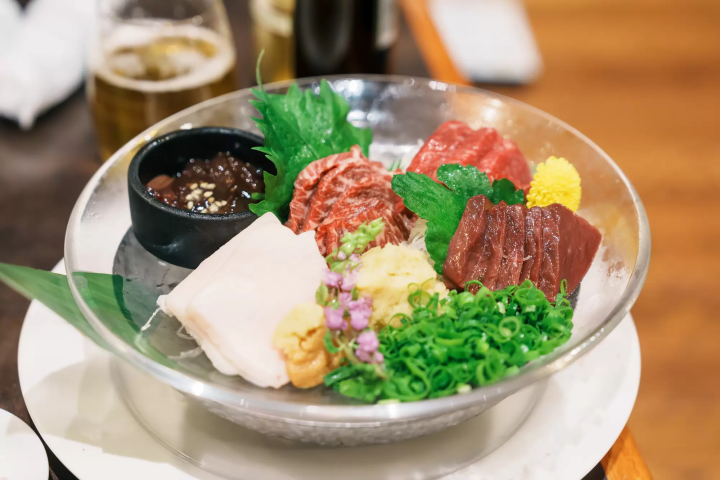
Photo by Pixta
One of the most unique dishes to try in Kyushu is horse meat. Horse meat sashimi or “basashi,” is a Japanese delicacy that is best served raw. Kumamoto prefecture is famous for its high-quality horse meat and is the recommended place to try basashi.
Basashi or raw horse sashimi contains high concentrations of glycogen which gives it an extra sweetness. The meat is cut into thin slices and served with aromatics such as onions, ginger, and garlic. It is often paired with salt and soy sauce for dipping. Kumamoto basashi is packed with minerals such as zinc, calcium, and iron.
Where To Try Horse Meat Dishes:
SUGANOYA Shinshigai Store
2-10 1F, Shinshigai, Chuo Ward, Kumamoto Map
Read also
10. Chicken Nanban
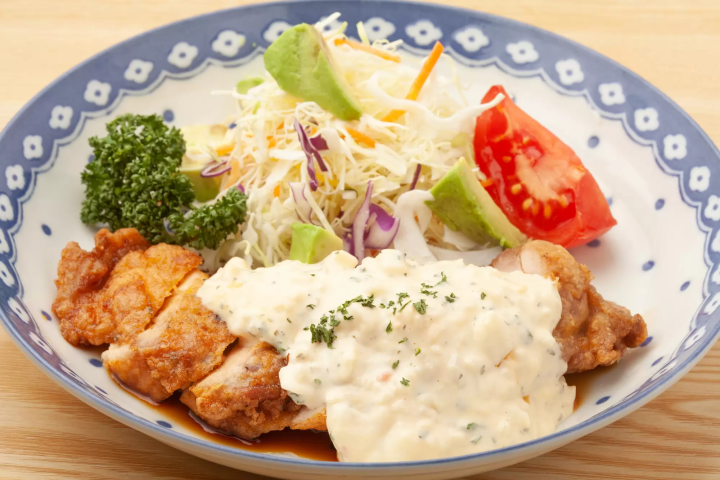
Photo by Pixta
The surfing paradise of Kyushu, Miyazaki prefecture, is known for its repertoire of late-night eats. With options that could rival Fukuoka’s yatai culture, there are many delicious things to eat in Miyazaki.
The most famous food is called Chicken Nanban - a Portuguese-inspired dish consisting of large pieces of fried chicken served with a large helping of sour and tangy tartar sauce. The consistency of the breading and the flavor of the chicken differs from each restaurant, so no matter where you try you will always be guaranteed a hefty plate of crispy Miyazaki fried chicken.
Where To Try Chicken Nanban:
GRILL Fubaika
Maehama-4276-689 Awakigaharacho, Miyazaki Map
11. Jidori Charcoal Chicken
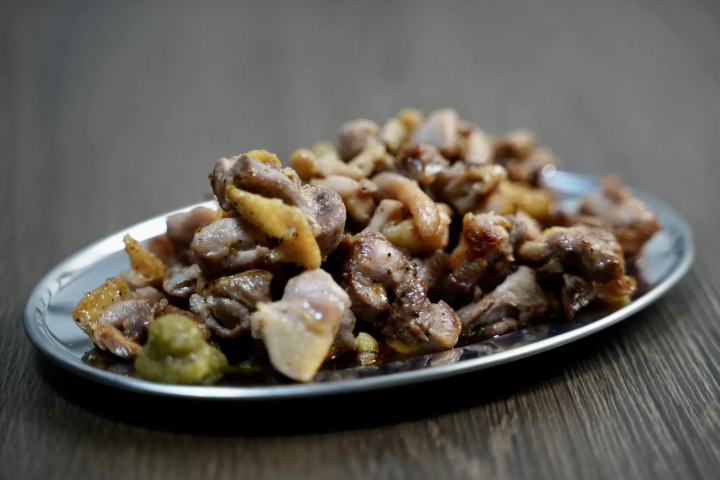
Photo by Pixta
Miyazaki has other famous dishes that involve chicken. Jidori is another popular dish that is often eaten before or during a night on the town.
The chicken is prepared by charcoal grilling over an open flame until the meat becomes chewy and blackened. The result is a mouth-watering, savory dish that pairs well with any cold beverage and is typically served on a steaming cast iron plate.
Jidori is a specialty dish that was created by Maruman Yakitori and has become an iconic food for Miyazaki prefecture.
Where To Try Jidori Charcoal Chicken:
Maruman Yakitori Main Branch
Tachibanadorinishi, Miyazaki Map
12. Hyuganatsu Fruit
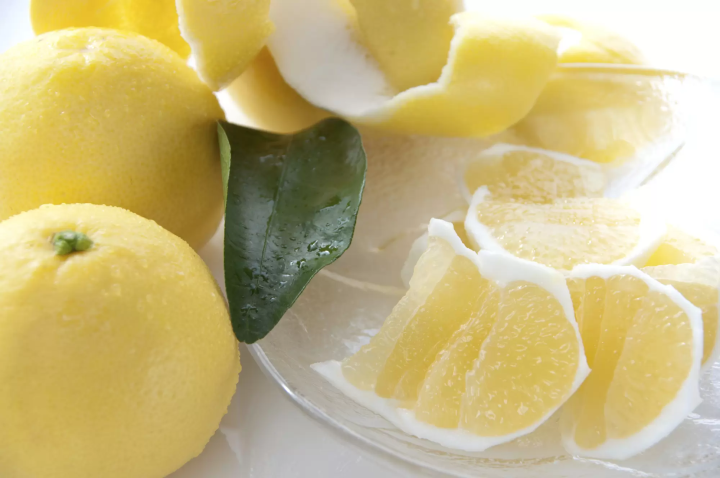
Photo by Pixta
If you’re looking for a sweet drink to enjoy while exploring Miyazaki prefecture, most locals would recommend trying Hyuganatsu, especially in hot weather.
Hyuganatsu is a citrus fruit that is native to Miyazaki. The fruit is easily recognized by its bright yellow color and is often compared to a lemon. The Hyuganatsu has a slightly sour taste that makes it a refreshing addition to any dessert or drink, and the best time to enjoy it is from spring to summer (January to May).
Hyuganatsu is a go-to summer drink for anyone looking to visit Miyazaki.
Where To Try Hyuganatsu Fruit:
Kinjyodo
2 Chome-2-1 Tachibanadorihigashi, Miyazaki Map
13. Castella
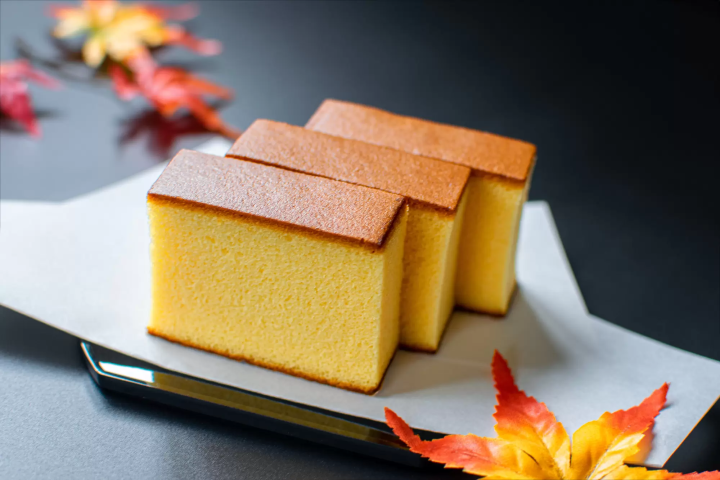
Photo by Pixta
Introduced to Japan by Portuguese merchants, Castella is a sponge cake that is considered to be one of the most recognizable Kyushu foods.
Popularized in the 16th century by traders living on Dejima Island in Nagasaki City, Castella is often treated like a Japanese wagashi or sweet. After the cake is baked and cut into rectangular slices, it’s served as an individual slice, often accompanied by hot tea or coffee.
Castella is traditionally made with typical sponge cake ingredients. In recent years, different variations have grown in popularity. It is now easy to find cakes that come in chocolate, strawberry, and green-tea flavors .
Castella is also an excellent choice for a souvenir.
Where To Try Castella:
Bunmeido Main Store
1-1 Edomachi, Nagasaki Map
14. Kakuni Manju
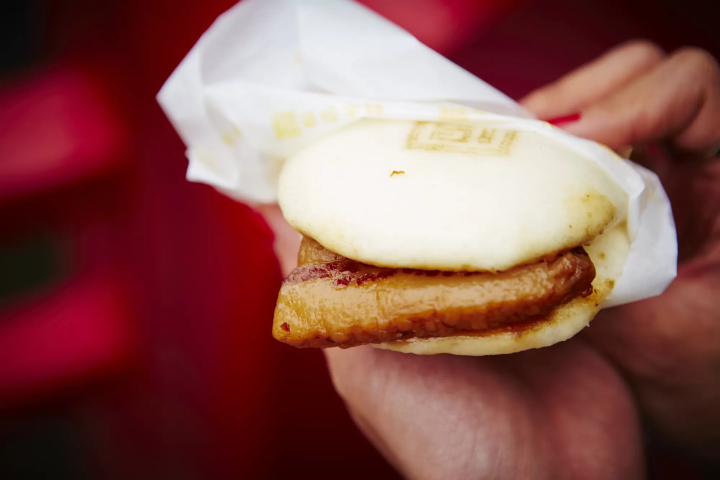
Photo by Pixta
Kakuni Manju is a Japanese style of pork belly buns that can only be found in Nagasaki’s Shinchi Chinatown.
Kakuni Manju was first introduced by Chinese merchants who were living and working in Nagasaki City. Before 1635, Chinese immigrants lived all over Kyushu until they were forced to relocate to Nagasaki City by the Tokugawa shogunate. The influence of Taiwan’s gua bao and China’s steamed buns is evident in the savory taste of the Kakuni Manju.
The pork belly is served with cucumbers and hoisin sauce on a fluffy white bun. Kakuni Manju is a great lunch option that is quick and affordable during a day of sightseeing.
Where To Try Kakuni Manju:
Nagasaki Shinchi Chinatown
10-13 Shinchimachi, Nagasaki Map
15. Champon
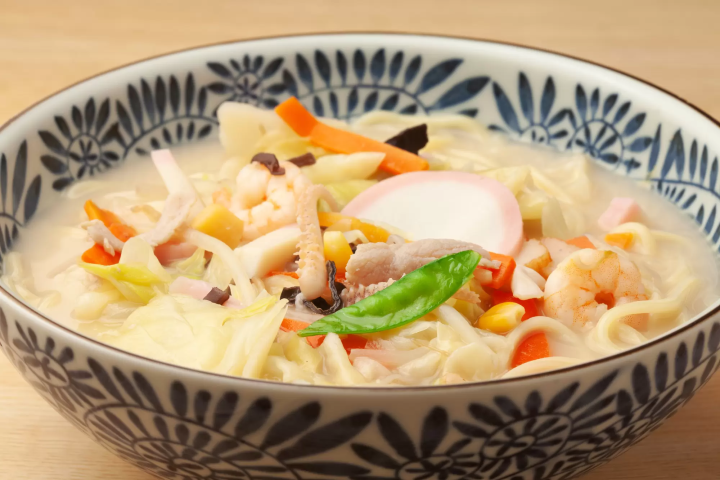
Photo by Pixta
Of Nagasaki prefecture’s many famous foods, Champon is perhaps the most recognizable.
In the tradition of Nagasaki cuisine, Champon is the result of Chinese and Japanese culinary influence. This dish originated in China’s Fujian province and was introduced to Japan by a restaurant owner hoping to attract hungry Chinese students living in Nagasaki.
Champon is a satisfying seafood dish that is packed with rich flavor. While Champon looks similar to ramen – it’s served with noodles, a variety of seafood toppings, and similar spices – some locals strongly believe that Champon is an entirely different dish.
Champon is the best option if you’re looking for a great local dish!
Where To Try Champon:
Champon Suzhou Lin (English Website)
1-67 Onouemachi, Nagasaki Map
16. Toriten
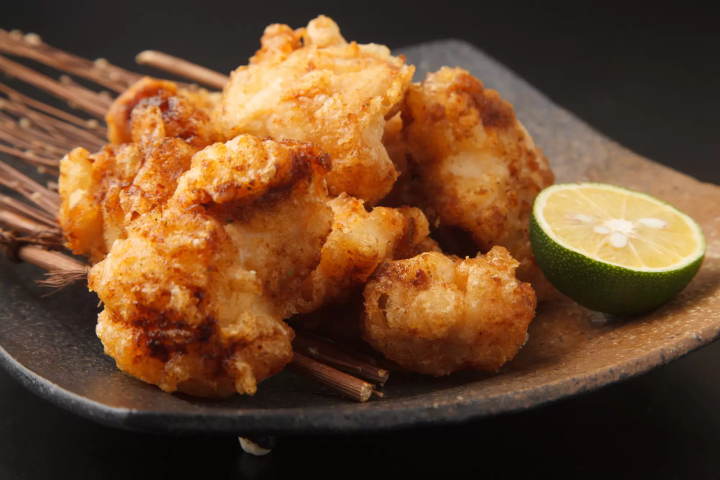
Photo by Pixta
If you’ve tried fried chicken or Japanese tempura, try to imagine those two textures together. If you imagined it, then you have guessed what Oita’s specialty dish tastes like. It truly is as delicious as it sounds!
Toriten is fried chicken that originates from Oita prefecture. The chicken is flavored with soy sauce, garlic powder, sake,and tempura powder before getting deep-fried. The chicken is then served with a side salad and a selection of sauces. The most common sauce is ponzu, which is made of soy sauce and vinegar.
The top recommendation for trying Toriten is in Oita City or the nearby town of Beppu.
Where To Try Toriten:
Restaurant Toyoken
Ishigakihigashi, Beppu, Oita Map
17. Jigokumushi
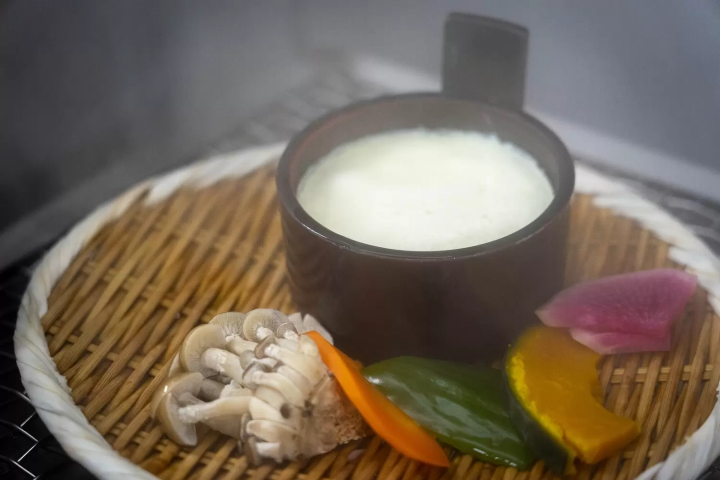
Photo by Pixta
A special kind of Kyushu food that can only be found in Oita is called Jigokumushi. “Jigoku” means “hell” in Japanese, and it refers to the many hot springs that can be found throughout the town of Beppu, where the custom of Jigokumushi originated.
Jigokumushi is a style of cooking where ingredients are prepared using the steam from a natural hot spring. A typical Jigokumushi dish includes some form of protein, usually a variety of meat or seafood, and vegetables that are steamed together.
The best place to try authentic Jigokumushi is by staying at a Japanese inn or ryokan.
Where To Try Jigokumushi:
Mushicharo
Kannawa, Beppu, Oita Map
Read also
18. Soy Sauce and Miso Specialties

In Usuki City, Oita, there is a family-owned company that is famous for producing soy sauce and miso specialties. Kani Shoyu is the oldest producer of soy sauce and miso in Kyushu. They sell a unique kind of dessert called “shoyu ice.”
Shoyu ice is a soft serve ice cream that is made with soy sauce. To some, the flavor is similar to salted caramel. Shoyu ice cream is sold alongside ginger crackers at various confectionary stores. Ginger crackers are a local favorite that have existed since the Edo Period.
Another famous dish is Dango Jiru. Made from miso and shiitake mushrooms, this heart-warming dumpling soup is a beloved part of home-cooked meals in Oita.
Where to Try Soy Sauce and Miso Specialties:
Kani Shoyu
218 Usuki, Oita Map
19. Seafood in Saga

Photo by Pixta
Saga prefecture is home to some of Kyushu island’s best seafood. Of the many fish that are plentiful in the bays of Imari and Karatsu, the two types that most people recommend is Yobuko squid and Boiled Blue Crab.
Yobuko Squid is a delicacy from the city of Karatsu. It is a popular menu item found at traditional Japanese inns and local restaurants. Yobuko squid has a delicious crunchy texture and like many types of seafood in Japanese cuisine, Yobuko squid is served raw in a sashimi style. Most restaurants recommend eating the squid immediately after serving, as the squid tastes best when it’s still fresh.
“Yude Takezaki gani,” also known as Boiled Blue Crab, comes from the Takezaki area of the Ariake Sea. This is a premium seafood dish that can be enjoyed year-round.
Where To Try Yobuko Squid:
Fujioka
1708 Yobukocho Yobuko, Karatsu, Saga Map
20. Hot Spring Tofu

Photo by Pixta
Famous hot spring towns in Saga such as Ureshino and Takeo are the best places to find "Onsen Yudofu," also known as Hot Spring Tofu.
Hot Spring Tofu is special because it is made with extra soft tofu that has been boiled with hot spring water and "Fukuyutaka" soybeans produced in Saga prefecture.
It is often served with sesame or ponzu sauce and can typically be found at traditional Japanese inns as part of a larger kaiseki meal. The Hot Spring Tofu has a silky smooth texture and contains minerals that enhance its subtle flavor.
The tradition of eating this creamy tofu dish has existed in Saga for a long time and is a sweet addition to any meal.
Where To Try Hot Spring Tofu:
Hirakawaya Tofu & Cafe
Otsu-1463 Ureshinomachi Oaza Shimojuku, Ureshino, Saga Map
Discover Must-Try Dishes in Kyushu
We hope you enjoyed this culinary tour of Kyushu and try these one-of-a-kind Kyushu foods on your next trip!





















































![[Coupon Available] Attention Overseas Winter Sports Fans! Nagano's Sports Depot Has Evolved](https://resources.matcha-jp.com/resize/720x2000/2026/01/05-254819.webp)
![[2 hours from Tokyo ] 10 Quiet and Breathtaking Views of Mount Fuji in Yamanashi Hokuto City , Yamanashi - Part 2](https://resources.matcha-jp.com/resize/720x2000/2025/12/16-253037.webp)
